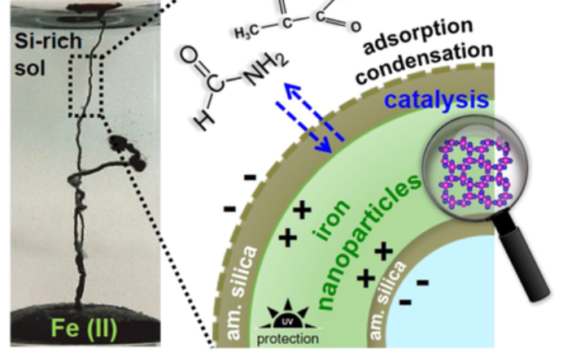
Iron-silica self-organized membranes, so-called chemical gardens, behave as fuel cells and catalyze the formation of amino/carboxylic acids and RNA nucleobases from organics that were available on early Earth. Despite their relevance for prebiotic chemistry, little is known about their structure and mineralogy at the nanoscale. Studied here are focused ion beam milled sections of iron-silica membranes, grown from synthetic and natural, alkaline, serpentinization-derived fluids thought to be widespread on early Earth. Electron microscopy shows they comprise amorphous silica and iron nanoparticles of large surface areas and inter/intraparticle porosities. Their construction resembles that of a heterogeneous catalyst, but they can also exhibit a bilayer structure. Surface-area measurements suggest that membranes grown from natural waters have even higher catalytic potential. Considering their geochemically plausible precipitation in the early hydrothermal systems where abiotic organics were produced, iron-silica membranes might have assisted the generation and organization of the first biologically relevant organics.
Kotopoulou, E.; Lopez-Haro, M.; Calvino Gamez, J. J.; Garcia-Ruiz, J. M., Nanoscale anatomy of iron-silica self-organized membranes: implications for prebiotic chemistry. Angewandte Chemie International Edition 2020, 59,2–9.


